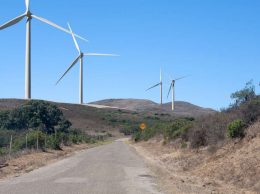Fracking here. Fracking there. Fracking everywhere.
We’re not talking about actually fracking — the shorthand for the advanced oil extraction technique known as hydraulic fracturing. We’re talking about the proliferation of regulatory actions up and down the Central Coast.
Santa Barbara and Ventura counties are separately weighing whether they need new fracking rules. Assemblymember Das Williams and State Sen. Hannah Beth Jackson want their own bills, including one that would label all water used to frack a well as hazardous waste.
All of this activity comes against a backdrop of media frenzy and plenty of grist for political fundraising. And there is the fact that the latest studies of California’s oil reserves suggest 15 billion barrels of recoverable oil, much of it high quality, in formations such as Monterey Shale.
Oil companies including Vintage Production, a unit of Occidental Petroleum, have been actively renewing leases where they think fracking might have the potential to release new reserves.
Occidental has been particularly active in the Santa Paula-Fillmore corridor of the Santa Clara River Valley, where existing wells could be reworked in order to tap shale formations at a depth of 15,000 feet, triple the depth of current wells.
The realities of fracking and fracking rules are different than the picture painted by opponents. As a technique, fracking has been quietly used for decades to extract oil principally in Kern County but also occasionally in the Tri-Counties.
It is a heavily regulated industry, employing skilled workers and scientists and its track record, so far, has been so good that nobody paid attention to the issue until game-changing shale discoveries came along.
In light of the huge potential, the state of California, which traditionally has oversight over drilling and well safety rule-making, is methodically taking up the fracking issue.
The administration of Gov. Jerry Brown has a process under way to rewrite and update rules that will govern new fracking operations. A release of possible rules took place late in 2012 and a formal rule-making process will likely get under way in a matter of weeks.
Proponents of fracking point out that the state’s early draft adapts many of the same rules that have been approved in other states, notably Colorado. Opponents think California should have much tighter rules than elsewhere.
We can understand that with fracking now at or near the top of the enviro-political agenda, our elected officials will want to have a say in the process. And we understand there is a big difference in oversight requirements between having a dozen or so fracking wells operating in Ventura County versus the several hundred in Kern County.
But having a county-by-county standard for fracking doesn’t really make sense. What does make sense is to let the state of California, which does have a strong record for safe drilling operations, set the standards for fracking and for the safe disposal of water and other waste products. That will give local and state elected officials plenty of opportunity to have a say as the formal rulemaking process gets under way.






 Print
Print Email
Email


















Curious how Sacramento can get in its own way on the way to the altar. Billions in tax revenues await the legislature’s approval of wise frac rules, rules which the industry supports.